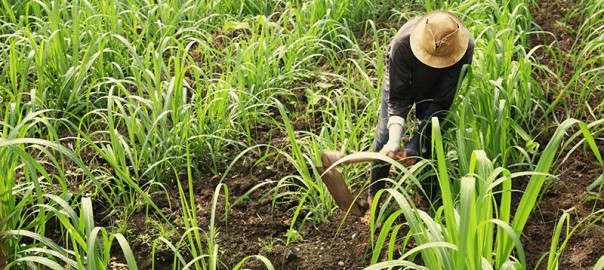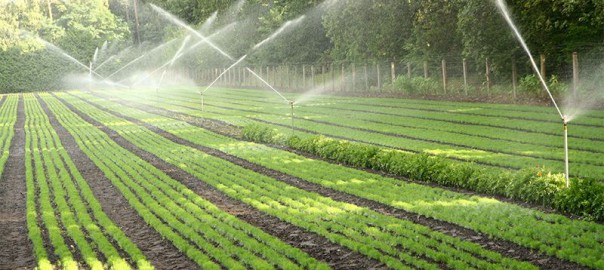Bulletin 230409 BIOGARDEN BIOLOGICAL CONTROL.
The excessive use of pesticides has brought negative consequences to the soil, the water and the environment; it has caused an increase in plagues due to the resistance insects present towards chemical products and the destruction of natural enemies; the use of these products has caused serious problems for human and animal health due to toxic residue in various products. In order to reduce the negative effect of the indiscriminate use of pesticides, the implementation of agricultural sustainable systems has become necessary, which are based on the knowledge of the relationship between crops, the environment and the organisms that live in the countryside. In nature, there is a great diversity of organisms, which affect insects, thus reducing the populations of plagues. These organisms include fungi, bacteria, viruses and entomological pathogenic nematodes, some of which, mainly fungi, have been massively manipulated and reproduced in order to be successfully used in the control of important agricultural plagues. Entomological pathogenic fungi, are microorganisms that live at the expense of insects of various types, in a natural manner, they do not cause harm to humans, animals or plants. They require adequate humidity, pH and temperatures for their natural dispersion and infection, depending on each species of fungi. Entomological pathogenic fungi act through contact in the different stage of plague insects. The conidia, are the infectious units, they penetrate the body of the insect, producing digestive, nervous, muscle, respiratory, excretory, etc. disturbances.; this means, the insect gets sick, stops eating and subsequently dies. Death can occur between three and five days, depending on the virulence of the fungi and the stage of the insect.
Many mistakes in the use of bio-fungicides, have been originated, since they are only used with the criteria of colonization, in conditions in which the minimum climatic conditions were not ensured, or when a very low dose has been used, which cannot provide adequate protection for the crops. In order to avoid these mistakes, two principles have been proposed for the use of entomological pathogenic means: The first one, consists on the reduction of the population under the economic threshold, which is achieved through the use of appropriate dosage and the repetition of treatments when the levels of the plague surpass the critical population level. The second principle is based on the application of a greater dose to the widest spectrum of the plague which may arise. In addition to this, it must be taken into account that the effect of the entomological pathogenic fungi is not immediate, the first application must be performed before the plague reaches high levels of population, or before the critical period of the crop. Due to that reason, the first application must be performed in a preventive manner, in accordance to a scheduled program or after observing the first plague insects in the crops.
Since they are living organisms, the entomological pathogenic fungi are affected by environmental conditions which may limit their effectiveness; some factors that must be taken into account are described below.
Agrochemicals prevent the development of these fungi, for that reason, the scheduling of the application must not coincide with the applications of fungicides, sulfur compounds, etc. It must be considered that fungi require acid pH (5-7) conditions, reason for which at the time of application, this factor must be taken into account, since if water is alkaline the effectiveness of the fungus is affected; due to that reason, the applications must always be performed with clean water, and standing water and dirty waters should not be used.
The application of the entomological pathogenic fungi must be performed in the afternoon when the solar radiation is not so strong. The success of the application and the control with entomological pathogenic fungi also depends on the selection of the spray equipment. Conventional equipment is used, using the conical nozzle of fine drops, it must not be worn out or be damaged on the hole of the nozzle, in such a way than an uniform application is obtained. The equipment must be new or clean, without chemical residue, which inhibit the viability of the conidia, carefully clean the equipment when it has been previously used for the application of fungicides.
The residual effect of entomological pathogenic microorganisms lasts for one week, and losses of the product due to rain, drift, flow and wind turbulence must be avoided. In order to obtain better results, a second application must be performed on at day 5 or 7 after the first application, it is advisable to perform from 3 to 4 applications, establishing the intervals of application according to the essays, as well as the biology of the plague to be treated.
Lastly, one of the main problems of fungicides is the storage, since the viability of the conidia must be maintained. The capacity of survival of conidia depends on their moisture content. Under conditions of refrigeration (4-5 ºC), the viability may be kept for two years, but at room conditions, it may last up to 12 months approximately, unless an adequate type of formulation is available, which helps protecting the conidia.
To avoid a reduction in the quality and effectiveness of the products based on entomological pathogenic fungi, these must be kept in cool, clean, non-humid places, and in places without direct sunlight exposure, since these factors are unfavorable for the fungi. Additionally, after the users obtained the product, they must not store it at room conditions for more than two months.



